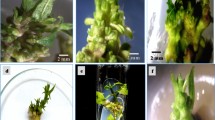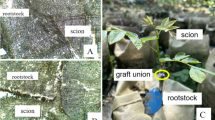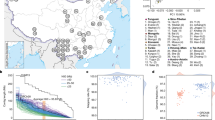Abstract
IN your last number Mr. Ranyard brings forward an objection to Mr. Darwin's theory of Pangenesis on the ground that the grafting of a bud on a stock of a different species does not produce a hybrid offspring. I am not about to defend the doctrine of Pangenesis, which appears to me incapable alike of proof and of disproof. It is, however, a well-known fact that the siock does affect the scion, and vice versâ. In Prof. Henfrey's “Elementary Course of Botany” (Dr. Masters's edition) he says, “A certain amount of physiological influence of the stock over the scion is shown to exist by such facts of horticultural experience as that the fruit of the pear is smaller and more highly coloured when ‘worked on’ the quince and medlar than when grafted on pear-stocks, and is earlier when worked on the mountain-ash.” The well-known instances of the communication of variegation from the scion to the stock in Abutilon, recorded by Prof. Moiren and others, are considered cases of contagious disease; but what is the theory ot contagion but that the blood or other “fluid” of an animal or plant is affected by emanations call them “gemmules” or what you will, from another individual? The same writer records an instance which he considers well authenticated of the production of the hybrid Cytisus Adami by the grafting of C. purpureus on C. laburnum.
This is a preview of subscription content, access via your institution
Access options
Subscribe to this journal
Receive 51 print issues and online access
$199.00 per year
only $3.90 per issue
Buy this article
- Purchase on SpringerLink
- Instant access to full article PDF
Prices may be subject to local taxes which are calculated during checkout
Similar content being viewed by others
Rights and permissions
About this article
Cite this article
BENNETT, A. Pangenesis: Graft-Hybrids. Nature 4, 46 (1871). https://doi.org/10.1038/004046b0
Issue date:
DOI: https://doi.org/10.1038/004046b0
This article is cited by
-
The production of a physiological puzzle: how Cytisus adami confused and inspired a century’s botanists, gardeners, and evolutionists
History and Philosophy of the Life Sciences (2018)



